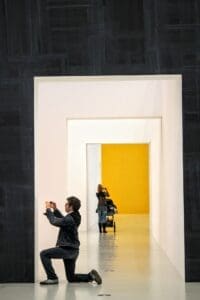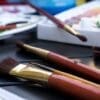This article really is aimed more towards the budding pastel artist. Some-one who is a little nervous about picking up a pastel stick and beginning to paint and not really know much about pastels, but feels the urge anyway to “give it a go”.
Everyone has to start somewhere and usually the beginning is a good place to start, mind you, you could try being an expert straight up, but I somehow don’t think that will work. Even if you are an experienced oil or acrylic painter, pastels still need to be “understood” as they are a very different medium to work with.
To begin with it’s best to understand the different types of pastels. Mainly because they all do slightly different things.
The hard pastel has more binder present so it is better able to hold the edge. This makes it a good choice in fine detail work. The hard pastel is also a good medium to use in the initial sketch.
Now comes soft pastels. The soft pastel comes in a variety of softness. Slightly firmer ones are better for the beginner as they are more controllable, the really soft ones are for when you feel very comfortable using pastels. Don’t worry, you’ll know the difference once you walk into your art supply store. The really soft ones are usually hand made and very expensive, the reason being is that they are practically pure pigment. A general soft pastel, medium price, is perfectly acceptable and will do the job wonderfully well.
When it comes to painting with pastels the hard and the soft varieties are the most common and really are good ones to begin with.
The next variety is the oil pastel and these are totally different again. We wont go into oil pastels in this article, but will concentrate on the other two as they are better when you are starting out.
The main thing about pastels is that they are really quite easy to work with in so many ways. You can begin a painting, get a little way into it, get called away (maybe a phone call), and you don’t have to worry about anything drying out. It definitely is a “drop and leave” type of painting medium.
Another easy thing about pastels is that there really isn’t much that you need to have in order to begin painting with pastels. Here’s a list:
Paper – a piece of water color paper is good to start with
Pastels – a basic selection of colors
Mmmmmmm – that’s it to start.
Add to that:
A board either on an easel or on the table
A couple of bulldog clips to attach the paper to the board
What else…….oh yes, one very important thing……an apron!
That leads me to the only downside of painting with pastels. They can get rather messy, which does turn a lot of artists off using them. How to get round the messiness is the subject of another article, just know that it can be done. In the meantime, understand that there will be mess, so a good idea is to lay out a large piece of plastic under your board or easel (on the table or the floor), have a couple of damp and dry cloths ready to keep your hands clean and dry and you’re good to go.
As for the tools you need. Start with your fingers, you can always get into stumps and other equipment later.
So there you have it. There’s not a lot about pastels that is difficult. All you need is a piece of paper and some pastel sticks and you can actually start painting with pastels immediately. Oh, you will need a subject and a good dollop of enthusiasm.
Source by Emma Ralph
Disclaimer: The views and opinions expressed in this article are those of the authors and do not necessarily reflect the official policy or position of Irish Artmart.





